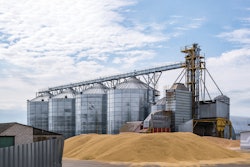
As the United States shifts towards cleaner burning fuels, demand for soybean oil as a key ingredient in renewable diesel production is soaring. This trend is prompting U.S. soybean processors to significantly increase their production capacity, with an expected 23% rise over the next three years.
This increase in demand, highlighted in a new report by CoBank’s Knowledge Exchange, comes as renewable diesel gains preference over traditional diesel due to its low carbon footprint. U.S. production of renewable diesel is projected to see a sharp uptick in the near future.
While soybean processors have enjoyed record-high profit margins recently, these margins are anticipated to moderate. The market is adjusting to an increase in domestic soy crushing capacity and intensifying global competition. Alternative renewable diesel feedstocks like imported vegetable oils, beef tallow, and used cooking oil are putting pressure on soybean oil prices. Additionally, a surplus in soybean meal is likely to result in continued weakness in its prices.
The CoBank report suggests that U.S. soybean processors are well-prepared for the impending downturn in margins after years of record profits. However, new high-cost plants, especially those located away from soybean-growing regions, face greater financial risks due to higher breakeven costs and dependency on transportation for soybean acquisition.
Soybean oil prices are expected to be supported by the growing demand for renewable diesel. However, competition from imported oils like canola and palm is on the rise. Although soybean oil remains the predominant feedstock for biobased diesel, its usage has declined from 50% to about 35% as alternatives gain traction.
The expansion in soybean processing capacity in the U.S. will increase soybean meal supplies, potentially pressuring processor margins. The domestic swine and poultry industries, major consumers of soybean meal, could benefit from this abundance. However, the capacity of the U.S. livestock industry to absorb this increased supply remains a question.
According to Brian Earnest, lead animal protein economist for CoBank, growth in animal protein production in the U.S. has been tempered by higher input costs and uncertain consumer demand trends. Although broiler integrators might leverage the growing soybean meal supplies better, the overall opportunity for domestic usage is limited. Thus, export markets will play a crucial role.
Following Argentina's historic drought in 2023, which impacted its soybean crop, U.S. soybean meal exports saw growth. However, the competition for export market share is expected to intensify, especially in key markets like Southeast Asia.


















